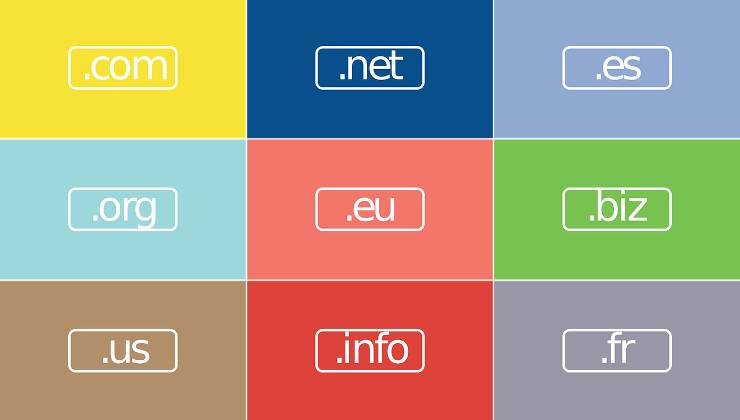You need to have a domain name first before starting to create a website. In this article you will learn what a domain name is, the difference between a domain and a URL and how to register it.
Table of Contents
What Is a Domain Name?
The domain name is the identity or address of a website, for example, sorsawo.com. Websites need a domain name so that visitors can easily remember it.
If you want to create a website using WordPress, you must first register the domain name you want to use. Companies that serve domain name registration are called Domain Registrars.
There are many companies that provide domain name registration services, for example Namecheap, DreamHost or Niagahoster.
In addition to domain registration, Domain Registrars usually also provide web hosting services. So you can register a domain name and buy a hosting package at the same company.
What’s the Difference Between URL and Domain Name?
URL or Universal Resource Locator is the complete file address that is used to find a page on a website.
Example: https://www.sorsawo.com/
The domain name is only part of the URL. Domain names usually appear after the “@” sign in email addresses and after “www” in web addresses. So, if someone asks what your website is then what you mention is your domain name.
Domain Name Structure

A complete domain name consists of three parts. It starts with a hostname (such as “www” to denote “world wide web”), followed by a 2nd-level domain (eg a brand or company name), and ends with a top-level domain (eg .com). Between parts of the domain separated by a period (dot).
In the example above, sorsawo is the second-level domain (SLD), while .com is the top-level domain (TLD).
Second-Level Domain (SLD)
SLD is responsible for making your domain name look unique. This can be your own name, brand name, organization, company or anything that makes your domain name easy for people to recognize.
When choosing an SLD, try to always remember the following tips:
- Choose a short and simple name, preferably less than 14 characters.
- Choose a name that is catchy and easy to remember.
- Make sure the name is still available and not protected by someone else’s copyright or trademark.
- Minimize the use of numbers, dashes and other special characters.
- Enter keywords related to your brand name.
Top-Level Domain (TLD)
TLDs are better known as domain extensions. The TLD can be found at the end of your domain name. The use of TLDs is regulated by an institution, namely ICANN (The Internet Corporation for Assigned Names and Numbers).
ICANN classifies TLDs into four categories, namely Generic Top-level Domains, Sponsored Top-level Domains, Country Code Top-level Domains and Infrastructure Top-level Domains.
1. Generic Top-Level Domain (gTLD)
gTLD is the most common domain that can be used by all users.
Here are some example of gTLD:
- .com – for commercial sites
- .org – for organization
- .net – for the network
- .name – for individuals
- .biz – for business
- .info – for information platforms
2. Sponsored Top-Level Domain (sTLD)
sTLD is still a generic top-level domain but may only be used by private organizations. Users who want to register this domain must follow certain rules.
Here are some example of sTLD:
- .gov – for US government sites
- .edu – for educational institutions
- .int – for purposes related to the organization of international treaties
- .mil – for the US military
- .mobi – for mobile product and service websites
- .jobs – for companies or legal organizations
- .tel – for internet communication service websites
- .post – for the postal service site
- .asia – for websites located in the Asia-Pacific region
3. Country Code Top-Level Domain (ccTLD)
ccTLD is a domain name extension that uses a country code.
Here are some example of ccTLD:
- .es – Spanish
- .ru – Russia
- .us – United States of America
- .ca – Canada
- .nl – Dutch
- .de – German
- .fr – France
- .in – India
- .ch – Switzerland
- .jp – Japan
- .cn – China
- .br – Brazil
- .id – Indonesia
In Indonesia, domain management in this category is regulated by an institution, namely PANDI (Indonesian Internet Domain Name Manager). The Indonesian domain may not be used carelessly. You need to meet certain requirements to register this domain.
The following are the terms of use for Indonesian domains:
| TLD | Purpose |
| .id | General |
| .co.id | Company or business entity |
| .sch.id | Kindergarten, Elementary, Middle and High School |
| .ac.id | College |
| .or.id | Organization |
| .ponpes.id | Islamic boarding school |
Here are the requirements for Indonesian domain registration:
| TLD | Requirement |
| .id | There is no requirement for a .ID domain |
| .co.id | – Scan of ID of Person in Charge – Scan of SIUP/TDP or Notary Deed – Scan of Brand Ownership Letter (if any) |
| .sch.id | – Scan of ID of Person in Charge – Scan of Application Letter for Principal or Institution Leader (Sample Document) – Scan of Decree on Institutional Establishment from the relevant Ministry or SKPD (specifically for non-formal education) |
| .ac.id | – Scan of ID of Person in Charge – Scan of the Decree on the Establishment of the Institution from the Ministry or Institution – Scan of Rector’s Application Letter or Head of Institution (Sample Document) |
| .or.id | – Scan of ID of Person in Charge – Scan of Notary Deed or Organizational Intern Decree |
| .ponpes.id | – Scan of ID of Person in Charge – Scan of Application Letter for Leaders of Islamic Boarding Schools (Sample Document) |
4. Infrastructure Top-Level Domain
ARPA is the only existing top-level infrastructure domain. ARPA stands for Address and Routing Parameter Area. This domain is provided by IANA to the IETF or Internet Engineering Task Force. Therefore, this domain is only used to manage infrastructure technical issues.
Domain Name Life Cycle
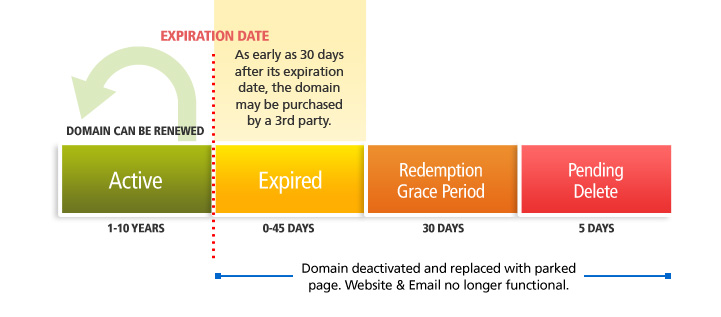
The domain name life cycle can be divided into four parts, namely Active, Expired, Redemption Grace Period, and Pending Delete.
- Active: The domain becomes active after being registered. This period lasts from 1 to 10 years. You must immediately renew the domain before entering the Expired period.
- Expired: A domain officially expires one day after its expiration date.
- Redemption Grace Period: After about 45 days in the expired state, the domain name will enter the Redemption Grace Period. If your domain is in this period, you can still retrieve it.
- Pending Delete: After the domain enters the Pending Delete period, the domain cannot be retrieved. Domains will remain in this status for about 5 days and then released back to the public for new registrations.
Best Domain Registrar Recommendations
Due to competition in the domain registration business, you may find companies with very attractive offers. Although it looks good, but there are some drawbacks that you may not notice right away.
Therefore choosing the right domain registrar is very important so that problems do not occur in the future. In addition to cheap domain prices, you also have to pay attention to the company’s reputation and the experiences of other users who have become their customers.
Here are some domain name registration service providers that we recommend for you.
1. Namecheap
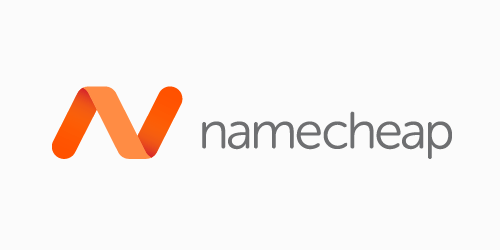
Namecheap is a domain registrar that has received accreditation from ICANN and is one of the most trusted companies in the industry.
They have an advanced domain search tool that will help you find the right domain name and make suggestions if the domain name you want is no longer available.
Here are the prices for Namecheap’s domain name extensions (TLDs):
| TLD | Register | Renew |
| .com | $9.58 | $14.58 |
| .net | $10.98 | $14.98 |
| .org | $8.98 | $14.98 |
You can get more complete price information for domain name extensions on the Namecheap website.
2. DreamHost
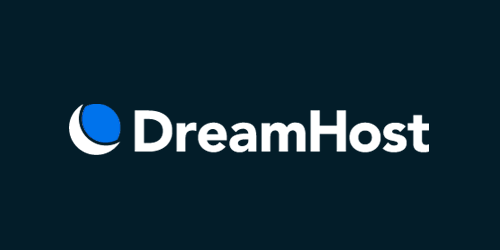
DreamHost is another popular registrar and web hosting service provider. They offer free domain name registration along with domain privacy to anyone who signs up for their hosting package for a minimum period of one year.
Here are the prices for DreamHost domain name extensions (TLDs):
| TLD | Register | Renew |
| .com | $8.99 | $17.99 |
| .net | $10.99 | $16.99 |
| .org | $11.99 | $15.99 |
You can get more complete price information for domain name extensions on the DreamHost website.
3. Bluehost

Bluehost is one of the largest web hosting service providers in the world. As part of their web hosting service, they also offer domain name registration.
If you want a solution where you can buy a web hosting package and register the domain name in one place then Bluehost is the right choice.
Here are the prices for Bluehost domain name extensions (TLDs):
| TLD | Register | Renew |
| .com | $12.99 | $19.99 |
| .net | $14.99 | $19.99 |
| .org | $9.99 | $19.99 |
You can get more complete price information for domain name extensions on the Bluehost website.
4. HostGator
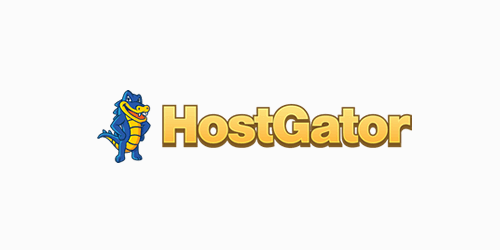
HostGator is another popular company that provides domain name registration and web hosting services. They offer a wide selection of attractive domain name extensions, domain privacy and easy-to-use DNS management.
Here are the prices for HostGator domain name extensions (TLDs):
| TLD | Register | Renew |
| .com | $12.95 | $19.99 |
| .net | $12.95 | $19.99 |
| .org | $12.95 | $19.99 |
You can get more complete price information for domain name extensions on the HostGator website.
5. Niagahoster
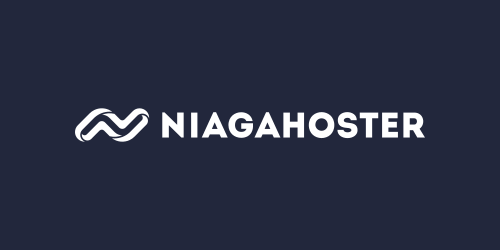
Niagahoster is popular domain name registration and web hosting service provider in Indonesia. The company also offers public domain registration as well as Indonesian domains.
Here are the prices for Niagahoster domain name extensions (TLDs):
| TLD | Register | Renew |
| .com | Rp 119.000 | Rp 139.000 |
| .net | Rp 149.000 | Rp 155.000 |
| .org | Rp 175.000 | Rp 175.000 |
Here are the prices for Indonesian domain name extensions:
| TLD | Register | Renew |
| .id | Rp 230.000 | Rp 250.000 |
| .co.id | Rp 295.000 | Rp 295.000 |
| .sch.id | Rp 49.000 | Rp 49.000 |
| .ac.id | Rp 55.000 | Rp 89.000 |
| .or.id | Rp 55.000 | Rp 89.000 |
| .ponpes.id | Rp 50.000 | Rp 50.000 |
You can get more complete price information for domain name extensions on the Niagahoster website.
FAQ (Frequently Asked Questions)
The domain name is the identity or address of a website, for example, sorsawo.com. A domain name is needed so that visitors can easily remember your website.
Domain name registration fees vary depending on the extension or TLD and the term you choose. A domain name with a .com extension usually costs around $12 per year. Often domain registrars will give you a discount for the first year or even a free domain if you buy the hosting package they offer.
Whenever possible you should use a .com domain extension. However, if you want to create a website for a school, agency or college located in Indonesia, according to the provisions you must use the Indonesian domain extension.
When you register a domain name, you can use the domain name for a term of your choosing, usually between one and ten years. If you want to keep using the domain name, you will need to renew the domain name registration before it expires. Otherwise, you risk losing your domain name.
At least one day before expiration, you must renew your domain name registration as soon as possible. If you forget, your website will not be accessible using that domain. You may still be able to retrieve it during the Redemption Grace Period, but the fees offered by domain registrars are usually very expensive.
We hope this article helped you understand what a domain name is, know how it works and be able to register the domain name you want.
If you have questions about domain registration that we haven’t discussed in this article, don’t hesitate to send us a message via the contact form. Our team will respond as soon as possible.

